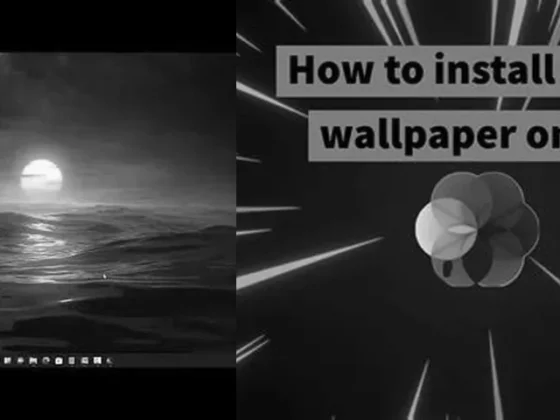What Is Control Alt Delete On A Chromebook: Are you confused about the mysterious Control Alt Delete combination on a Chromebook? Don’t worry, you’re not alone! Many Chromebook users find themselves scratching their heads when it comes to this keyboard shortcut. But fear not, because in this blog post, we’re going to unravel the secrets of Control Alt Delete on a Chromebook and show you how to use it effectively. Whether you’re looking to enhance accessibility, manage your screen, or even record your activities, we’ve got you covered. So, let’s dive in and discover the hidden wonders of Control Alt Delete on a Chromebook!
Understanding Control Alt Delete on a Chromebook
When it comes to managing your Chromebook, knowing the right keyboard shortcuts can enhance your productivity and troubleshooting abilities. The term “Control Alt Delete” is one that’s become synonymous with computers, especially for those familiar with Windows PCs. But what about Chromebook users? Let’s dive into understanding the Chromebook’s equivalent of this classic command.
The Chromebook Equivalent of Ctrl-Alt-Delete
On a Windows PC, pressing Ctrl-Alt-Delete is often the go-to method for accessing the Task Manager or force quitting applications. Chromebook, on the other hand, offers a different approach to this functionality. Instead of the traditional three-finger salute, Chromebook users can press Shift-Esc to call up the Chrome Task Manager.
Using the Chrome Task Manager
The Task Manager is a critical tool for both casual users and power users alike, providing insights into system resource usage and application management.
Accessing and Navigating the Task Manager
By pressing Shift-Esc, you summon a window that lists all currently running apps and extensions. Here you can see how much CPU, memory, and network resources each process is consuming. It’s an invaluable tool when your Chromebook starts to slow down, as it allows you to identify and terminate resource-hungry applications.
Force Quitting Unresponsive Apps
Just like Windows, Chrome OS can encounter unresponsive apps. Within the Task Manager, you can select the misbehaving app and click on the “End process” button. This is similar to the “End Task” function in Windows and is a straightforward method to regain control of your system.
Enhancing Accessibility and Screen Management
Chromebook keyboard shortcuts cover more than just task management. They also provide quick ways to enhance accessibility and manage your screen view.
ChromeVox and High Contrast Mode Shortcuts
For users who require spoken feedback, Ctrl + Alt + Z toggles ChromeVox, the built-in screen reader, on and off. This same combination also activates high contrast mode, which can help users with visual impairments better see screen content by increasing contrast between text and background colors.
Magnification Shortcuts
Those needing a closer look at their screen can use Ctrl + Search + h (or Ctrl + Launcher + h) to magnify the entire screen, while Ctrl + Search + m (or Ctrl + Launcher + m) allows them to magnify only part of the screen. These shortcuts provide flexible options for users needing visual assistance.
Activating the Virtual Keyboard
On touch-enabled Chromebooks, the virtual keyboard can be a convenient tool, especially in tablet mode. By pressing Ctrl + Search + d (or Ctrl + Launcher + d), you can bring up the virtual keyboard to type without a physical keyboard.
Advanced Chromebook Controls
Entering the CROSH Terminal
For more advanced users, the CROSH terminal (Chrome OS Developer Shell) can be accessed by pressing Ctrl Alt T. This opens a new tab with a command line interface where you can run diagnostic tests, ping websites, and get detailed system information, among other things.
Utilizing the Backspace Key
As a quick aside, the Backspace key on a Chromebook operates as the Delete key does on other platforms, removing the character to the left of the cursor. It’s a small but important distinction for those transitioning from other operating systems to Chrome OS.
Screen Recording on Chromebook
Another useful feature for both educators and professionals is screen recording. By pressing Ctrl + Alt + Shift + r, you start recording your desktop. Pressing the combination again stops the recording. It’s a simple yet powerful tool for creating tutorials, presentations, or recording any activity on your Chromebook.
Conclusion
Chromebooks might not have the traditional Control Alt Delete function, but they offer a suite of keyboard shortcuts that provide comprehensive control over the device. Whether it’s managing tasks, enhancing accessibility, or performing advanced system functions, these shortcuts help you make the most out of your Chromebook experience. Remember to use these commands wisely and enhance your Chromebook productivity and troubleshooting like a pro.
Tips for Remembering Chromebook Shortcuts
- Practice regularly: The more you use the shortcuts, the more natural they will become.
- Create a cheat sheet: Keep a list of the most useful shortcuts handy until they’re committed to memory.
- Customize your experience: As you grow more comfortable with Chrome OS, you may find certain shortcuts more useful than others. Focus on those that best suit your workflow.
With these tips and a solid understanding of Chromebook’s unique shortcuts, you’ll be navigating and managing your device with ease. Happy computing!
FAQ & Related Questions about Control Alt Delete on a Chromebook
Q: What is Control Alt Delete on a Chromebook?
A: Control Alt Delete on a Chromebook is the equivalent of Windows’ Ctrl-Alt-Delete. It is a key combination used to perform various functions on the Chrome OS.
Q: What does Shift-Esc do on a Chromebook?
A: Shift-Esc on a Chromebook calls up Chrome’s Task Manager. It allows you to see which apps are using the most system resources and force quit an unresponsive app.
Q: What does Ctrl Alt Z do on a Chromebook?
A: Ctrl + Alt + Z on a Chromebook is a shortcut to turn ChromeVox (spoken feedback) on or off.
Q: What happens if you do Ctrl Alt Shift R on a Chromebook?
A: If you press Ctrl + Alt + Shift + R on a Chromebook, it will factory reset your device. This means that all your data and settings will be erased, and you will need to sign in with your Google Account again.
Q: What does Alt F4 do to a Chromebook?
A: Chromebooks do not have a row of F-Keys, so Alt + F4 cannot be used to close a window. Instead, you can use the shortcut Search + Alt + #4 to close a window on a Chromebook.


